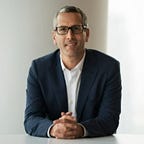The Transformation of Dubai
Dubai has transformed from a fishing village to an iconic destination and continues to evolve and innovate. A booming economy, visionary leaders, luxury real estate, cultural diversity, and commitment to sustainability have made Dubai a global powerhouse and a beacon of progress in the region. The city offers one-of-a-kind investment and entrepreneurial opportunities and is attractive to those looking for an extraordinary place to live.
Dubai’s History
In 1833, 800 Bani Yas tribe members, led by the Maktoum family, settled in the mouth of a creek in Dubai. As a natural harbor, Dubai became a regional hub, and the souk (market) on the Deira side of the creek soon became the largest on the coast.
The population of Dubai reached nearly 20,000 by the 1930s, with a quarter of this number being expatriates. Throughout the late 1960s and early 1970s the city’s full potential had become clear, and it began catering to the needs of the tourism market. The Dubai World Trade Center was constructed in 1978. Throughout the decades Dubai has been committed to creating high-quality infrastructure and maintaining zero income tax and low import duties, which have combined to help transform the city and impart the unique and iconic status it enjoys today.
Real Estate Growth in Dubai
Experts in this emirate’s property market, like Ryan Mahoney of Dubai, UAE, know that the city has been — and continues to be — home to some of the most exciting developments in the world. These include the Burj Khalifa, the world’s tallest building, and the Palm Jumeirah, a man-made island development.
The city reported AED 528 billion in real estate transactions in 2022, cementing its reputation as a hub for investment in the property market.
Investment in Sustainability
Dubai is making its mark as a global leader in sustainable development and renewable energy, too. The recently launched Dubai Integrated Energy Strategy 2030 seeks to diversify the energy mix used by the city and grow the share of clean energy in Dubai’s total power output to 25% by 2030.
The city has heavily invested in sustainable real estate development, with the Green Building Code aiming to reduce the carbon footprint of buildings in Dubai by 30%.
Connecting Past and Present
The Dubai Frame connects the city’s past with its present. The two towers are 150 meters high and linked by a bridge at the top. This bridge provides breathtaking views of Old Dubai to the north and New Dubai to the south.
For more information about Dubai’s transformation, take a look at the embedded PDF.
